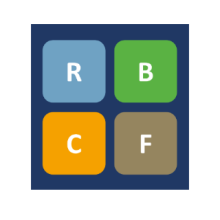

Results-Based Financing for Climate
Authors
Tags
- Clean energy-knowledge resources (1)
- Urban transportation-project examples (1)
- Energy access-project examples (9)
- Clean energy-project examples (9)
- Energy efficiency-project examples (5)
- Deforestation & forest degradation-knowledge resources (1)
- Urban transportation-knowledge resources (1)
- Deforestation & forest degradation-project examples (3)
- Water-project examples (3)
- Solid waste management-project examples (6)
- Energy access-knowledge resources (1)
- Climate resilience-knowledge resources (3)
- Climate resilience-project examples (3)
- Energy efficiency-knowledge resources (1)

Blog » Case Study-Pilot Auction Facility for Methane and Climate Change Mitigation (PAF)
Case Study-Pilot Auction Facility for Methane and Climate Change Mitigation (PAF)
The Pilot Auction Facility for Methane and Climate Change Mitigation (PAF) is a facility of the World Bank Group and is supported by the USA, Germany, Sweden and Switzerland.[1] The program was launched in 2014. The primary goal of PAF is to “stimulate investment in projects that reduce Greenhouse Gas (GHG) emissions while maximizing the impact of public funds and leveraging private sector financing”.[2] The initial two auctions target projects that reduce methane emissions at landfill, animal waste, and wastewater sites. The first auction targeted only CDM project activities and was conducted in July 2015, with price guarantees cleared at $2.4 US$ per credit for 8.7 million tons of CO2 emission reductions.[3] The second auction was conducted in May 2016 and extended to also include voluntary carbon projects. The auction cleared at $3.5 US$ per credit for 5.7 million tons of CO2 emission reductions.[4] A third auction will target nitrous oxide (N2O) abatement projects and is planned for early 2017.
Scope
Country
Developing countries
Sector
Non-combustion emissions
Timeframe
2014 - Present
Volume
US$ 53 million
Donor(s)
USA, Germany, Sweden and Switzerland fund the program
Implementer(s)
World Bank
Final beneficiary
Local communities
On which level are RBCFs used?
At the project level
Disbursement linked indicator(s)
tCO2e
Program Design: The PAF is designed to set a floor price for future carbon credits by auctioning put options. The put option is embedded into bonds that are issued by the World Bank (obligations are backed by the PAF). In a scenario that market prices of carbon credits exceeds the strike price of the put options, participants forego on the redemption of the option and monetize the carbon credits on the market at higher price. If the carbon prices fall below the strike price, then the owners have the right but not the obligation to sell the carbon credits to PAF at the strike price. This arrangement secures a minimum return for realized GHG mitigation action.
Purpose / Goal
Outputs
Allocation of climate finance via price guarantees determined through an auctioning approach
Outcomes
Maximize the achievement of greenhouse gas emission (CH4) reductions and also maximize the impact of public fund in efficient ways.
Impacts
Combat climate change
On which of these levels are measurable indicators defined / formulated?
Output
RBCF Design & DLIs: The PAF is solely based on a RBCF mechanism. Resources of the PAF are disbursed only against verified emission reductions in unit of $/tCO2e. Eligible standards include the CDM, Verified Carbon Standard, and the Gold Standard.
Support Instrument
Type of support granted:
A guaranteed floor price on carbon reduction credits delivered through the auctioning of put options supported by donor funding.
How is the payment related to the goal(s)?
If carbon prices in international markets fall below the strike price, the put option owner has the right to sell the carbon credits to PAF at the strike price.
Lessons-learn: PAF utilizes existing infrastructure, namely MRV systems in respective countries that have participated in the international carbon market. In addition, it can be seen that innovation of design can be integrated into RBCF initiative. At the center of PAF, the market risk mitigation mechanism is crucial to the leverage of private investments. By allocating the put options through an auction, the program introduces competition into the mechanism to ensure good usage of public money.
References: